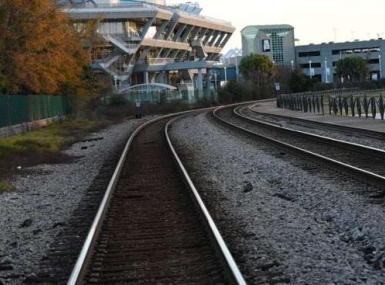Share
Line: | Five-year FAST Act restores 30 MAP-21 transportation funding cut, funds off-system bridge program @NACoTweets |
Congress has accomplished something unheard of for over a decade: It passed a long-term surface transportation reauthorization bill.
After a year of short-term extensions of MAP-21, federal highway and transit programs now have a long-term policy framework and funding through the Fixing America’s Surface Transportation (FAST) Act (H.R. 22). President Obama signed it on Dec. 4.
The fully funded five-year measure represents a compromise between the Surface Transportation Reauthorization and Reform (STRR) Act of 2015, which passed the House in November, and the Developing a Reliable and Innovative Vision for the Economy (DRIVE) Act, which passed the Senate in July.
While many county priorities were included in both the STRR and DRIVE acts, the FAST Act responds to NACo’s call for the inclusion of preferred policy reforms and funding from each of the proposals. Rather than going forward with a partially funded six-year bill, as had been previously been proposed, Congress ultimately provided a five-year authorization with sufficient funding to keep the Highway Trust Fund solvent through its duration.
The FAST Act addresses two other NACo priorities, by renewing the Export-Import Bank and removing the ban on municipal bond financing for projects receiving aid through the Water Infrastructure Finance and Innovation Act.
About the FAST Act
The FAST Act authorizes $280 billion in spending out of the Highway Trust Fund for highway and transit programs. This works out to an average of $56.2 billion per year, an annual increase in investment of almost $4 billion over current law. The bill reflects a compromise between the two chambers’ reauthorization proposals and includes a number of county priorities. They include:
- Long-term certainty: A five-year bill, the FAST Act will provide counties the long-term certainty they need in order to plan, fund and deliver transformative transportation projects.
- Funding for locally owned infrastructure: The act increases the amount of funding available for locally owned infrastructure by increasing funding for the Surface Transportation Program and making an additional $116 billion available for county-owned highway bridges. This additional funding more than repairs the 30 percent decrease in funding that occurred under MAP-21.
- Increased local decision-making: The act acknowledges and uses the value of local decision-making by sub-allocating a great share (up to 55 percent by FY 20) — or roughly $28 billion — of the Surface Transportation Program to local areas and local governments.
- Funding for off-system bridges: The act protects set-aside funding for off-system bridges, which provides over $776 million annually for bridges that are primarily owned by counties and other local governments.
- Funding for rural and urban public transportation systems: The act continues funding for urban and rural public transportation formula grants. In addition, the bill increases funding for the Bus and Bus Facilities formula grant program and creates additional competitive bus grants programs that will provide discretionary funding to further support counties’ bus purchases and bus facility investments.
- Provisions to streamline project delivery: The act builds on the reforms of MAP-21 aimed at expediting and streamlining project delivery. Specifically, the bill establishes a new pilot program to allow states to substitute their own environmental laws and regulations for the National Environmental Policy Act (NEPA) and requires an assessment of previous efforts to accelerate the environmental review process, as well as recommendations on additional means of accelerating the project delivery process.
- Reauthorization of the Export-Import Bank: The act reauthorizes the Export-Import Bank, which is designed to help American businesses compete in the global marketplace by financing exports of various goods and services.
- Removing limitations on the use of tax-exempt municipal bonds: The FAST Act removes a provision from the Water Infrastructure Finance and Innovation Act (WIFIA) that prohibits tax-exempt bonds from being used in conjunction with WIFIA funding. This improves flexibility for counties and boosts their ability to finance key water infrastructure projects.
To better understand how the FAST Act addresses NACo’s priorities for reauthorization and how it compares to current law, NACo has developed a chart that can be found at www.naco.org/map21.



